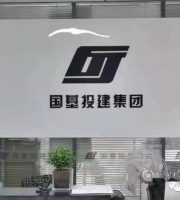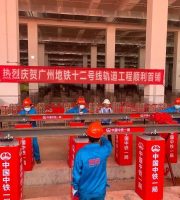Introduction building external wall insulation is an important process of engineering construction, and its engineering quality control is very critical
.
At the same time, attention should also be paid to building energy conservation in the current insulation construction, that is, on the basis of effectively saving energy and reducing energy consumption, to better complete the building external wall insulation construction
.
Now we have sorted out the relevant knowledge points, let’s have a look
.
Key points of energy saving and thermal insulation 01 material energy saving the energy saving and thermal insulation materials used in energy saving and thermal insulation construction usually belong to thermal insulation materials, with a large number of closed holes in the material, and the apparent density is small
.
On the one hand, it can save energy, on the other hand, it can also meet the thermal environment of building space or thermal equipment
.
Commonly used energy saving thermal insulation materials are polystyrene foam board (EPS and XPS), rock wool board, glass cotton felt and ultra light polystyrene granule insulation slurry
.
In addition, there are new organic thermal insulation materials such as FGC (silicone) external thermal insulation material, rubber plastic sponge thermal insulation material and so on
.
In addition, with the development of energy-saving and thermal insulation materials to multi-functional composite, lightweight and green, the comprehensive performance of materials should be reasonably considered in the selection of materials
.
The materials with low thermal conductivity, low water absorption and flame retardancy should be selected, and the low price should not be blindly pursued
.
02 technical energy saving in the construction of energy-saving and thermal insulation, in addition to the control of energy-saving materials, we should also choose a reasonable and effective energy-saving and thermal insulation system
.
(1) EPS board thin plastering external thermal insulation system
.
EPS thin plastering external thermal insulation system is a mature external thermal insulation system which is widely used at home and abroad
.
The construction of the system is simple, the price is not high, and its service life can exceed 25 years
.
(2) Transparent insulation technology
.
The technology is to use the visibility of transparent thermal insulation materials, smear them on the windows and other parts, so that the windows and other parts can also absorb heat through the solar radiation, so as to increase the overall thermal insulation of the building
.
(3) The external thermal insulation system of assembled thermal insulation and decoration integrated external wall
.
The industrial production of thermal insulation decorative composite core material is polyurethane foam, or XPS board, and its appearance is 0.5mm thick aluminum plate coated with imitation porcelain and imitation natural stone
.
At the same time, it is affixed with 0.06mm aluminum foil moistureproof layer, which is mainly applied to the existing building, concrete and masonry structure external wall
.
(4) Rock wool board external insulation system
.
The system is mainly applicable to the external walls of concrete and masonry structures
.
During the construction, the rock wool board is fixed on the external wall with mechanical fasteners, and then the galvanized steel wire mesh is hung outside, and the rubber powder EPS particle insulation slurry is applied at the same time
.
Key points for construction 01 key points for construction (1) before construction, the concrete residue and dust on the wall surface of the external wall shall be removed, polished and cleaned, the screw hole of the external wall shall be sealed, and 5 ~ 10mm waterproof ointment shall be applied
.
(2) When bonding the polystyrene board, the adhesive mortar overflowing from the board edge should be removed in time to ensure the tight splicing of the board joint
.
If the joint width exceeds 2mm, the polystyrene sheet with corresponding thickness can be filled
.
(3) The mortar shall be applied from top to bottom, from left to right, and the bottom layer mortar shall be applied first, and then the surface layer mortar shall be applied
.
At the same time, the total thickness of the mortar shall be controlled at 3.0 ~ 5.0 mm
.
(4) During the construction, the grid cloth thrown out in advance should be turned over along the thickness of the plate and completely embedded in the plastering mortar, and the trace of grid cloth can be seen on the surface
.
(5) In high temperature weather in summer, attention should be paid to avoid construction under strong light
.
If not, sunscreen cloth should be set up on the construction scaffold to cover the construction wall
.
With the gradual improvement of energy-saving standards, we should pay attention to the fire performance of energy-saving insulation materials to effectively prevent building fires
.
For the combustion performance of materials, it can be generally divided into class a of non flammability, Class B1 of non flammability, class B2 of flammability and class B3 of flammability
.
Commonly used insulation materials, rock wool board, foam glass, inorganic thermal insulation mortar and so on belong to a grade, phenolic resin, rubber powder polystyrene particles belong to B1 grade
.
03 key points of acceptance (1) after each process is completed, the flatness in all directions shall be checked with a 2m flat ruler, and the verticality shall be checked with a line falling ruler, and the wall surface shall be smooth and smooth, with no repair trace and good appearance
.
(2) Needling method should be used to check the thickness deviation of insulation layer to determine whether the actual thickness of insulation core board meets the design requirements
.
(3) The site shall be inspected by observation and hand pushing, and the tensile bond strength inspection report and construction record shall be checked to determine whether the polystyrene board is firmly bonded with the wall, and whether there is looseness and virtual adhesion.
.


